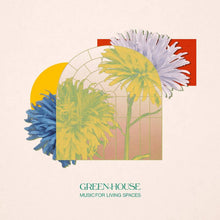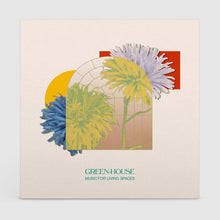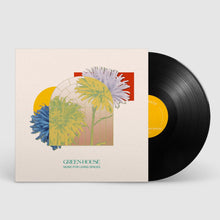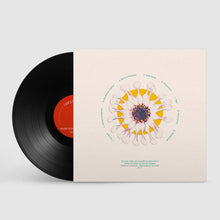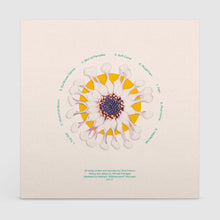
Leaving Records / US / 2021
Leaving Records presents Music For Living Spaces, the debut LP by non-binary Los Angeles-based artist Green-House. Olive Ardizoni helms the project, which made its debut with the charming 2019 EP Six Songs for Invisible Gardens. Music for Living Spaces represents an evolution of its predecessor’s minimalist compositions into songs that move with winsome melodies and emotional arcs. Though recorded during a pandemic, the transporting nature of Music For Livings Spaces offers a remedy for dreariness. Ardizoni states, “I’m trying to hit that part of the brain that’s affected by the emotional state that you’re in when you perceive something as cute.”
Music For Living Spaces' first single “Sunflower Dance” sports a breezy, bucolic vibe. The track is intended to invoke the whimsical image of hamsters happily dancing in a field. Ardizoni brings an intentionality to these playful atmospheres. They state, “In our culture, we prioritize profound artistic expression through emotions like sadness or aggression, but cuteness, silliness or fun, are the things that we trivialize in our culture. We say that they’re childish and it gets invalidated.” The complex and radiant productions on Music for Living Spaces counter this view. Ardizoni continues, “Cuteness and joy are gateways to compassion. It’s the gateway to empathy and activating the network in your brain that boosts moral concern for other people in the world around you.” Despite its general sunniness, Music For Living Spaces does not solely rely on exuberant, colorful moods. “Royal Fern” is a sophisticated composition of voices calling and responding to each other in rippling waves, while towards the closing of the album we hear Ardizoni’s ethereal voice for the first time that carries a nuanced, contemplative aura that defies categorization.
Music For Living Spaces is a step forward for Green-House. Ardizoni states, “The intention of this project is to facilitate the connection between humans and nature. Instead of perceiving nature as something that's separate from us, or outside of our homes, we can recognize nature as something that is within us and in everything we do in our daily lives. You don't need to have access to the great outdoors to feel connected to the environment.”
Music For Living Spaces' first single “Sunflower Dance” sports a breezy, bucolic vibe. The track is intended to invoke the whimsical image of hamsters happily dancing in a field. Ardizoni brings an intentionality to these playful atmospheres. They state, “In our culture, we prioritize profound artistic expression through emotions like sadness or aggression, but cuteness, silliness or fun, are the things that we trivialize in our culture. We say that they’re childish and it gets invalidated.” The complex and radiant productions on Music for Living Spaces counter this view. Ardizoni continues, “Cuteness and joy are gateways to compassion. It’s the gateway to empathy and activating the network in your brain that boosts moral concern for other people in the world around you.” Despite its general sunniness, Music For Living Spaces does not solely rely on exuberant, colorful moods. “Royal Fern” is a sophisticated composition of voices calling and responding to each other in rippling waves, while towards the closing of the album we hear Ardizoni’s ethereal voice for the first time that carries a nuanced, contemplative aura that defies categorization.
Music For Living Spaces is a step forward for Green-House. Ardizoni states, “The intention of this project is to facilitate the connection between humans and nature. Instead of perceiving nature as something that's separate from us, or outside of our homes, we can recognize nature as something that is within us and in everything we do in our daily lives. You don't need to have access to the great outdoors to feel connected to the environment.”





